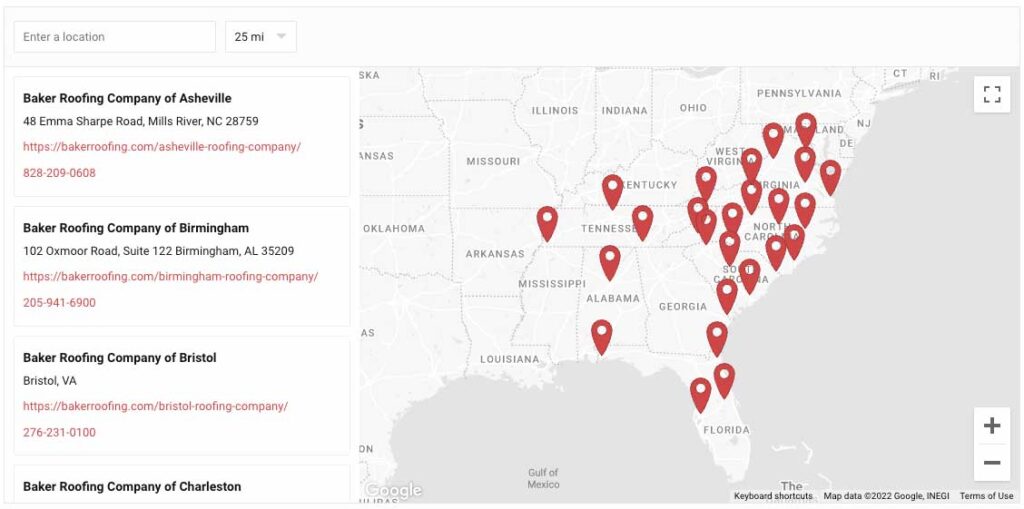What’s the most important component of your home? The walls? The floor? How about windows and doors? Well, most people would answer, “Why are you trying to pick a favorite part of a house, weirdo?” Here at Baker Home Exteriors, however, we have a confident answer: your roof. And that’s not just because we mainly sell roofs (to be fair, that’s actually a big reason, but proper roofing is still pretty important). It’s because we believe in roofs.
In all seriousness, a reliable roof is what keeps you, your family, and your belongings safe from the elements – after all, no one wants to get soaked by rain while watching TV, right? Of course, while that’s obvious, what’s less clear to most homeowners is how fragile a roof can be; without proper care, an asphalt roof can lose its functionality within as few as 15 years (in other words, if your home was built right after the 2008 financial crisis, pay attention). As such, once you reach that level of maturity, it becomes crucial to constantly be vigilant for signs that your roof is on its way out. With that in mind, here are some red flags that suggest you’re in the market for a roof replacement:
5. Old Age
Let’s start with the easiest question: How long does a roof last? Well, as we said, the poorest-quality roofs (i.e., those we didn’t install) can start deteriorating after only 15 years. However, most residential shingle roofs last between 20-25 years, depending on the materials used. Here are the average lifespans for a few of the most common types of roofs:
- Three-tab asphalt shingles: 15-20 years
- Architectural asphalt shingles: 30 years
- Premium/designer asphalt shingles: 25-40 years
- Wood shakes: 15-40 years
- Clay tiles: 50-100 years
- Copper shingles: 70+ years
- Slate: 60-150 years
- Metal: 40-80 years
- Modified bitumen: 20 years
For more detailed information on how long different types of roofs can last, check out this article from Architectural Digest. However, for most roofs, you should start checking for signs of damage and decay after 15 years, then become serious about assessing whether you need a replacement roof after 20+ years.
4. Shingle Condition
Of course, it doesn’t matter how young your roof is if your shingles are falling apart. With that in mind, it’s a good idea to inspect your roof shingles for damage at least once a year, as well as after any severe weather event. Be sure to check for signs of wear and tear, such as cracked, curled, or missing shingles. Also, if you notice an excessive number of granules in your gutters or on the ground near your downspouts, your shingles may be in their final days. When damaged or deteriorated shingles are consistently found across your entire roof, a complete replacement may be necessary to avoid leaks and water damage inside your home.
3. Leaks and Water Damage
Speaking of, leaks and water damage are some of the most pervasive and annoying symptoms of a compromised roof. Of course, the easiest way to tell you have leaks is by noticing rainwater infiltration within your home. However, stains on your ceilings or wall, as well as mold and discoloration in your attic, are also telltale signs of water damage. Consequently, if you notice any roof leaks, you should act immediately to prevent any damage to the rest of your home – some minor leaks can be fixed with repairs, but if they persist or become recurrent, you’re likely in need of a new roof.
2. Energy Inefficiency
As a roof ages, it’s insulation can deteriorate, resulting in unwanted external air infiltration – in simpler terms, your home will become an oven in the summer and a refrigerator in the winter. To combat this, of course, you’ll need to push your thermostat to its limit, driving up energy costs for you and your family throughout the year. As such, if you notice any out-of-the-ordinary temperature fluctuations in your home, you may want to consider a replacement roof.
1. Visible Structural Problems
While leaks may be the most common and frustrating sign of roof deterioration, structural damage is much more dangerous; this is the last red flag before a roof collapses (note that roof collapses are fairly uncommon as long as proper action is taken, and if you’re just now noticing signs of structural decay, you’ve likely got a few years before your roof collapses – but, as I’m sure you already know, you should not take risks with something this hazardous). When inspecting your roof, check for sagging areas, drooping or buckling roof decks, or signs of rotting, all of which indicate problems with your roof’s support system. If you notice any of these, you should contact a roofing professional immediately to assess next steps.
Ultimately, however, deciding whether or not you need a roof replacement is often a personal process – someone living on the North Carolina coast, for example, may be much more vulnerable to leaks than someone living in rural Ohio, so they’ll be in greater need of a replacement if they notice signs of deterioration. That’s why Baker Home Exteriors offers free estimates and consultations for all our potential customers; we’ve got the expertise you need to create your family’s dream home.
For the past 109 years, Baker Home Exteriors has provided unparalleled home services for families all throughout the Carolinas, including roofing, siding, windows, and doors. Let our family take care of yours – visit our website today to start your journey to the home you deserve.



